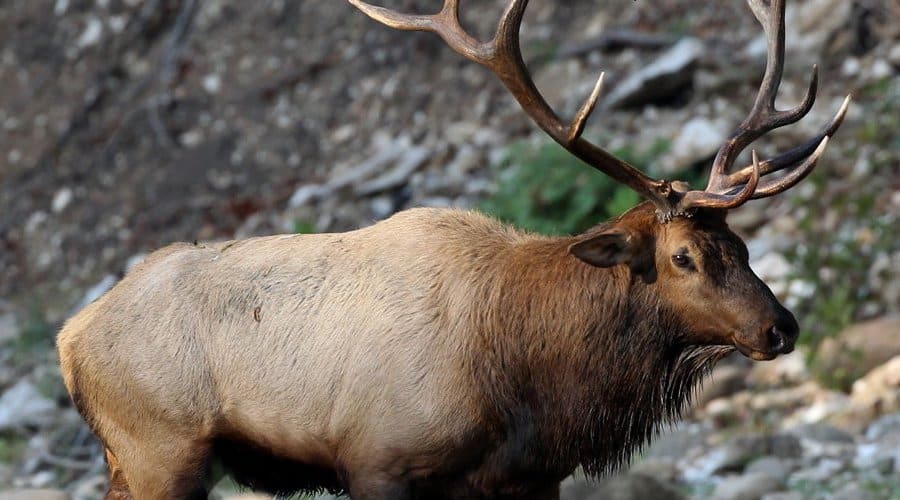History of Elk in Arkansas

Elk populations once numbered in the millions and occupied habitats across most of North America. Shrinking habitat and overhunting reduced these large populations to a few persistent herds in the West.
The eastern elk (Cervus elaphus canadensis) lived in eastern pine and hardwood forests, and was native to Arkansas. Records indicate it persisted no later than the 1840s, and is now extinct.
The USDA Forest Service introduced Rocky Mountain elk (Cersus elaphus nelsoni) in Franklin County’s Black Mountain Refuge in 1933. Three bulls and eight cows from Wichita National Wildlife Refuge in Oklahoma were released. This herd increased to an estimated 200 by the mid 1950s, then vanished. No one knows for sure what caused the elk to disappear. Some speculate illegal hunting, natural mortality and shrinking habitat through forest growth eventually caused their demise.
In 1981, the Arkansas Game and Fish Commission, in cooperation with private citizens, initiated another elk restoration project in the Ozark Mountains of northwest Arkansas. Between 1981 and 1985, 112 elk from Colorado and Nebraska were released in Newton County. All release sites were near the Buffalo National River.
The AGFC monitors the elk herd with the cooperation of the National Park Service. Through field observations, records on public comments and non-hunting mortalities and harvest data, the herd is estimated at about 450 animals. Arkansas’s elk range covers approximately 315,000 acres, of which 85,000 are public land. Public land within the elk range include National Park Service land, a small portion of National Forest land, and the AGFC’s Gene Rush Wildlife Management Area, bordering National Park Service property along the Buffalo River.
Without suitable habitat, elk would soon disappear from Arkansas. Realizing this, state, federal and private interests have worked together to expand and improve elk habitat along the Buffalo River. Since 1992, the AGFC, cooperating with the Rocky Mountain Elk Foundation, has done extensive habitat improvement work on Gene Rush WMA. Year-round elk use of the WMA has increased significantly, and more habitat work is planned.
The National Park Service also wants to ensure the future of the elk herd. Their efforts to create and maintain beneficial elk habitat along the 95,730-acre Buffalo National River includes conducting prescribed burns, planting wildlife friendly grasses and legumes, reclaiming old fields, maintaining hay fields and establishing native grass openings.
Elk continue to slowly expand their range toward the mouth of the Buffalo River; however suitable habitat and the potential for developing more elk habitat on the lower portion of the river is limited.
The modern day Arkansas elk hunt was established in 1998. Hunters are selected by a random draw for a limited number of public land elk permits. There also are private land permits based on a quota system. Hunters applying for private land permits must have written landowner permission to qualify for an either-sex elk permit.
Interest in Arkansas elk increases each year. Not only in hunting these animals, but viewing them as well. More Arkansans visit the Buffalo River area each year to observe and photograph these magnificent animals, especially in late September and early October when elk are breeding. The herd will never be large compared those in western states, but these elk provide an exceptional wildlife-viewing and hunting opportunity.
